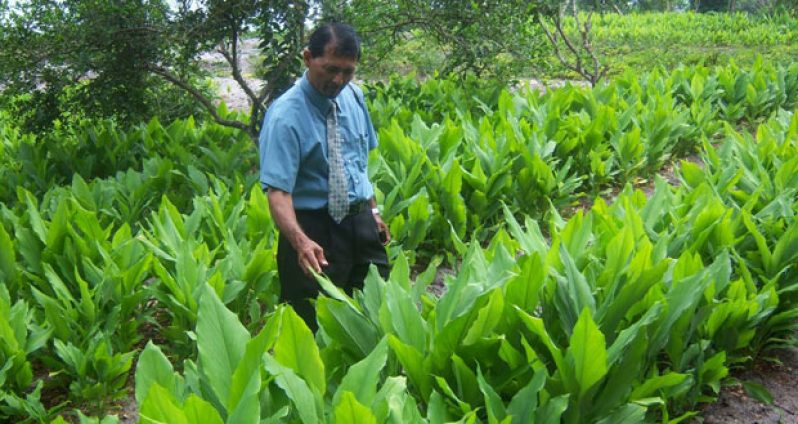AS a component of diversification of the crop sector, the Ministry of Agriculture, through the National Agriculture Research and Extension Institute (NAREI), has been specifically focusing on increasing production and productivity of some of the traditional agriculture crops, as well as trying as far as possible to reduce the importation of crops which can be grown locally.

The cultivation of spices is one aspect of diversification, and the ministry has especially targeted the hinterland communities in this regard.
Commodities like turmeric, ginger, and black pepper have been identified for cultivation in communities in Regions 1, 7 and 8, but the initial focus is on Region 1. Such commodities are responsible for close to US$2M in importation annually.
The Agriculture Ministry, however, has developed a strategy of support that will realise increased production with a focus on value added products, and in the case of turmeric, and ginger, the production of the powdered form of these for marketing.
The ultimate goal of the ministry is to, at least by 2020, have minimal importation of these commodities and their value added products.
The ministry’s central location for its spice activity in Region 1 is at Hosororo. Farmers there are engaged in the production of turmeric, and while the growing of the commodity has not been an issue, constraints with regard to processing have limited farmers’ enthusiasm.
NAREI Chief Executive Officer, Dr. Oudho Homenauth, explained that farmers are not accustomed to the processing, which involves the boiling, drying and grinding of the dry turmeric root into powder. The drying must be carried out for days and can become tedious.
The Ministry of Agriculture, taking into consideration these issues, in 2013 invested in mechanical equipment to support the spice production in Hosororo. Equipment was procured for boiling and a solar drier was obtained to assist the drying of other produce like black pepper and ginger, to some extent.
Focus was also placed, not only on supporting the industry through the introduction of new modernised equipment, but on advancing it through the provision of a technical support officer.
A NAREI staff member, who was sent to India to specialise in spice cultivation and processing, and who will return in July, will add impetus to the industry.
In 2013, ginger production rose, according to Dr. Homenauth. This year, the ministry is projecting that together with turmeric and ginger, the production figure will grow to about 10,000 tonnes. This figure is based on what the farmers have on the ground at present in Region 1 and also in Region 3 and on the Linden-Soesdyke Highway, where persons are producing turmeric and ginger. At this time there are 25 acres of turmeric on the ground.
The ministry, in 2013, purchased all the turmeric produced by farmers, to ensure that they earn an income. In another five to six months, Hosororo farmers will begin harvesting and processing. (GINA)



.jpg)








